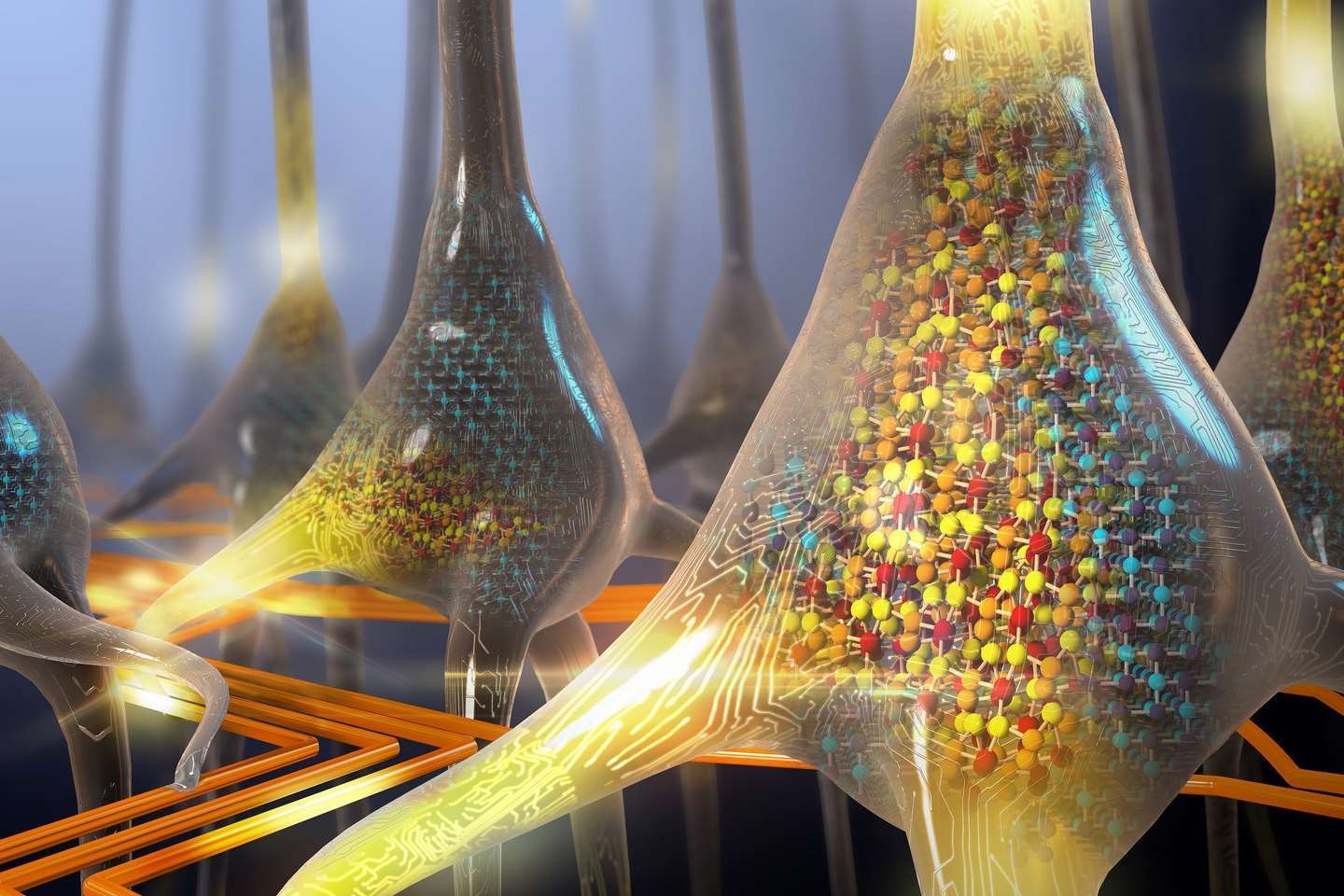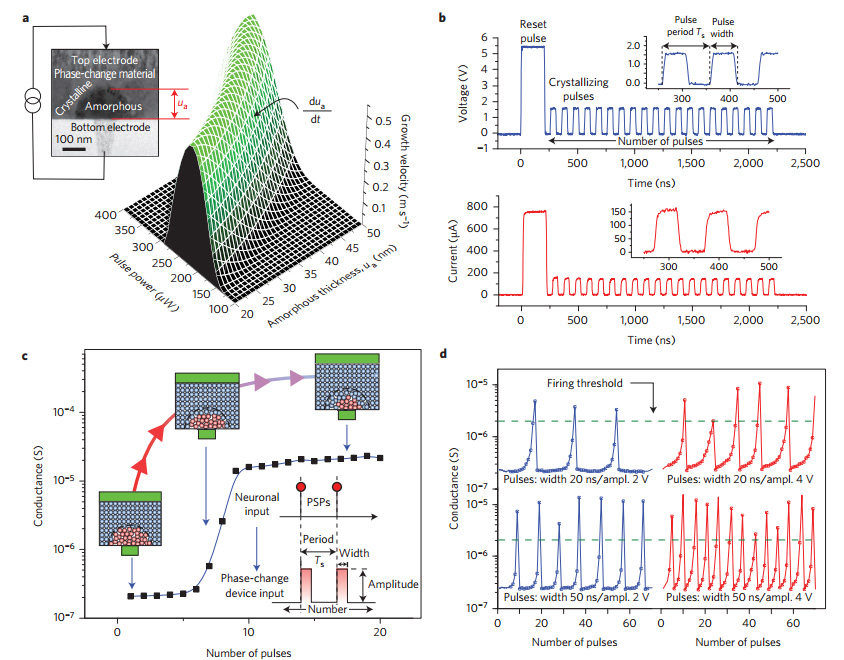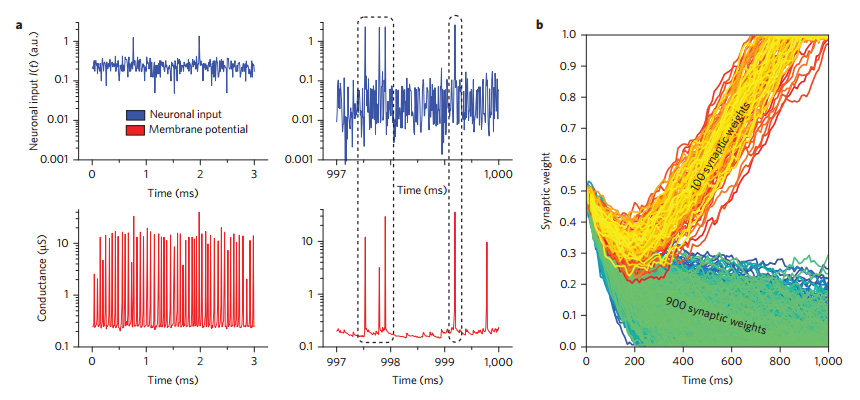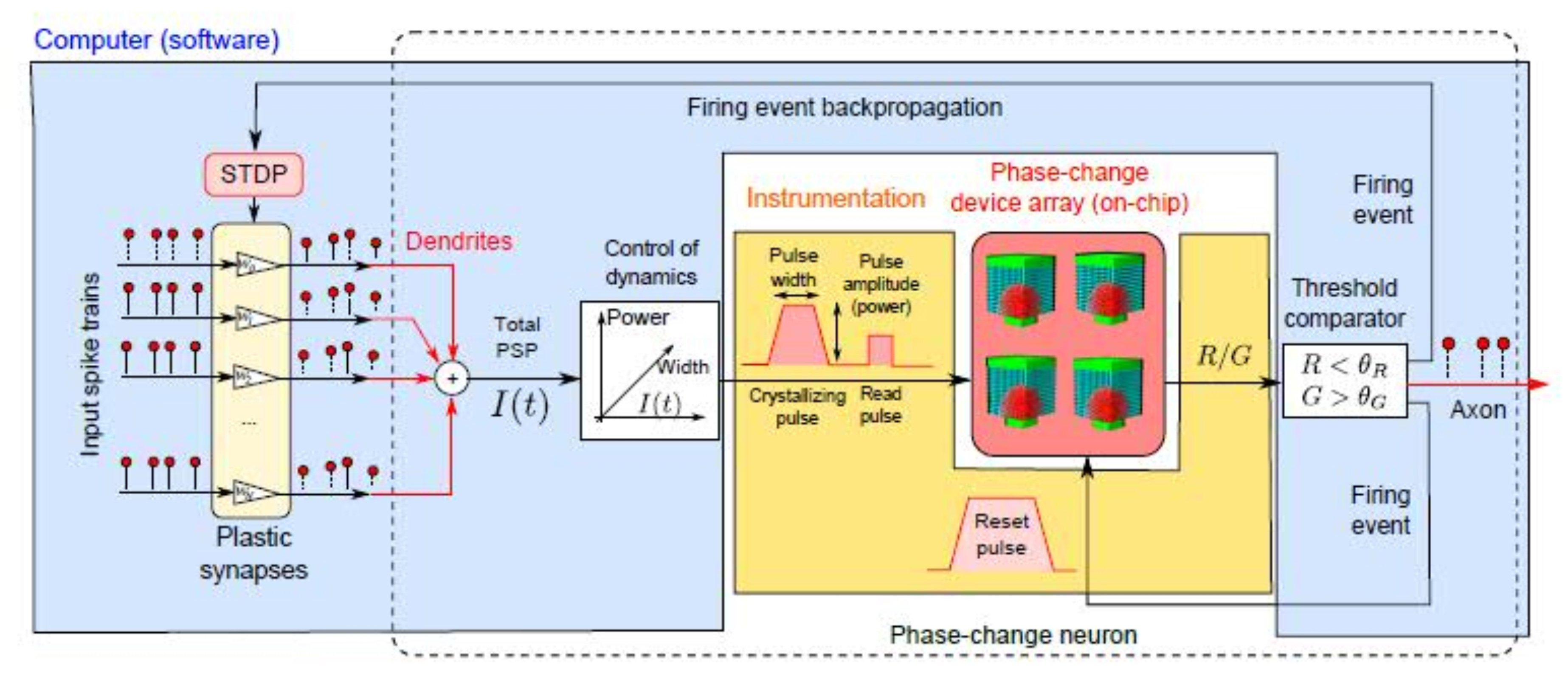IBM has created the world's first phase transition stochastic neurons.

Artistic interpretation of the appearance of a stochastic neuron from IBM
IBM developers have created the world's first stochastic neurons with a phase transition, which promises us the creation of a neuromorphic chip, which will significantly speed up computing and information processing. Attempts to create a similar technology were reported back in 2012, but at that time, Intel addressed this issue. Four years later, developers from IBM were able to achieve results in this area.
What is fundamentally different chip from stochastic neurons with a phase transition from the classical silicon?
')
The phase transition in thermodynamics is the transition of a substance from one thermodynamic phase to another when the external conditions change. In fact, the creation of a stochastic neuron with a phase transition will allow you to create an artificial model of such a biological system as the brain.
The corresponding study was received by Nature magazine in May 2015, and published in April 2016.

Scheme of a stochastic neuron with a phase transition, IBM
Like its biological counterpart, an artificial neuron from IBM has the same structure. It contains dendrites (inputs), a membrane (lipid bilayer ), a nucleus, and an axon (output). A distinctive feature of an artificial neuron is its neuronal membrane. In a real neuron, this is a lipid bilayer, which, in fact, acts as a resistor and a capacitor: the signal is passed only when a sufficient charge is accumulated on the dendrite, which leads to a surge in charge generation and the signal goes further to other neurons.

The behavior of the neuron in the phase transition, IBM
The phase transition in an artificial neuron is important because with its help, scientists and engineers will be able to achieve the emulation of the cognitive learning process inherent in the real biological brain. In fact, this development can be actively used in already existing projects of neural networks for network training and cognitive computing, which will significantly speed up information processing, for example, data analysis on the Internet.
In a neuron produced by IBM, the membrane is replaced by an alloy of germanium, antimony, and tellurium (GeSbTe or GST). GST has previously been used in the production of rewritable CDs due to the fact that it is subject to a phase transition. This means that it can successfully exist in two different states (crystalline and amorphous) and easily switches between them when heat arrives, which is indirectly confirmed by rewritable RW discs. In the case of GST, the material has fundamentally different properties depending on its phase. In crystalline it is a conductor, in amorphous it is an insulator.

Visual demonstration of the difference in the behavior of a neuron in a few seconds, IBM
Particular attention was also paid to the stochasticity of the chip. Scientists have suggested that the successful long-term work of our brain with incomparably smaller voltages of electromagnetic impulses in comparison with artificial neural networks is ensured by the formation of random connections between neurons. It is this “accident” that was implemented by IBM engineers in a new technology, thanks to, among other things, the use of materials subject to a phase transition in technology, namely GST.
At rest, the sheath of artificial neurons is in an amorphous state. When a signal is applied (discharge), it begins to crystallize, which ultimately makes the neuron a conductor from the insulator. After passing the signal, the neuron passes through a “reset”, i.e. its membrane returns to its amorphous state.
Where is the stochasticity inherent in living organisms due to noise, the environment and other things? Stochasticity begins at the stage of reverse amorphization after crystallization of the shell. For each neuron, the time of returning to the initial state and the total amorphousness of the membrane is always different, which leads to the creation of approximately the same degree of “randomness” in their work as that of biological analogues. That is why engineers can not accurately predict which particular neurons will be ready at the right time and are involved in the transmission of information.

IBM neuromorphic computer project
IBM engineers have already collected 5 cubes of 10 by 10 neurons and combined them into a network of 500 pieces. This block showed the same behavior in terms of population coding as biological neurons, and also bypassed the limitations for digital signal processing formulated in the Kotelnikov theorem .
Source: https://habr.com/ru/post/369551/
All Articles